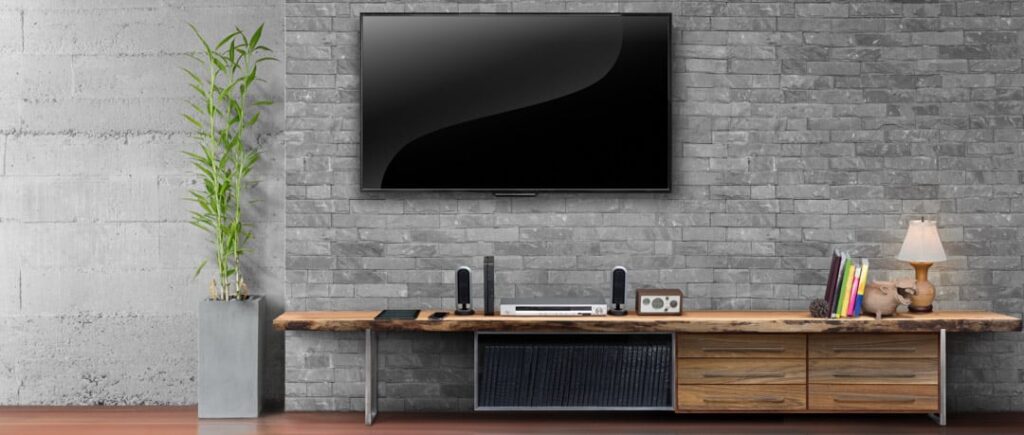LED or OLED, picture quality, resolution, frequency, connections, sound, etc. Anyone who has recently bought a new TV set or wants to do so soon and has already looked on the Internet knows how many terms and technical differences distinguish the various TVs. The variety can be disconcerting, because you naturally want to have the most suitable but also the most up-to-date model in your living room. But in the end, it’s not always the technical details that matter, it’s much more important that the TV can meet your own personal needs. That’s why it can be worthwhile to get advice on buying a TV from the dealer you trust. He can then deliver, install, connect and explain the new device to you and, if necessary, dispose of your old TV properly.
Full HD, Ultra HD or 8K?
For most TV users, UHD TVs are just the right choice these days, but in what size? For the typical TV user who consumes a mix of HD and UHD content via a cable connection or via satellite emfpang, the picture diagonal should be about half the viewing distance. So if you sit about 3 meters away from the TV in your own living room, a 55-inch TV (equivalent to 140 cm screen diagonal) would be just right. Full HD devices are almost only available in compact sizes under 1 meter screen diagonal (under 40 inches). Those who are satisfied with a rather smaller device can easily reach for a Full HD model.
8K, on the other hand, is a massive resolution, roughly equivalent to 16 times Full HD. Such a resolution comes in handy when you’re looking for a very large TV and don’t want to sit too far away from it. This is because it allows you to be just 2 meters away from a 75-inch (190 cm) screen diagonal, even with HD broadcasts, without any problems.
HDMI 2.0 or HDMI 2.1?
HDMI 2.1 is the newer HDMI standard and allows larger amounts of data than its predecessor (HDMI 2.0). However, there are still no feeder devices that already support the new standard, so HDMI 2.0 is perfectly sufficient for the moment. Important new features like HDR (Dolby Vision) are also supported by newer devices with HDMI 2.0.
HDR, HDR10+ or Dolby Vision?
HDR stands for High Dynamic Range, a term that will sound familiar to photographers. This term refers to a higher maximum brightness and more colors in the image. With HDR, the price of the TV becomes noticeable: affordable TVs can technically process HDR images, but their screens do not display all colors and brightness nuances by far. HDR becomes really interesting in slightly more expensive devices and you can see a striking difference. The additional HDR variants HDR10+ and Dolby Vision, on the other hand, do not make a big difference.
50 hertz, 100 hertz or more?
The frequency is specified in hertz, this value indicates how many images the TV can display per second. Normally, 50 frames per second are displayed (50 hertz). More expensive models double the frame rate to 100 hertz, so fast movements look sharper. This is currently also the maximum value that can be achieved with TVs; more than 100 hertz is currently not available. Certain manufacturers specify higher Hertz values because electronic tricks are used to increase the sharpness in movements even more.
Do TVs consume a lot of electricity?
The power consumption naturally increases with the image size. However, a high resolution and features like HDR also have a negative impact on the power consumption. For common 4K TVs with a 55-inch screen diagonal, the consumption is a moderate 120 watts.
Can voice control help?
Language control is not yet really suitable for everyday use. You could use it to find and start YouTube videos or Netflix series via voice command, but the voice control quickly reaches its limits and is not really a big help yet. For now, the remote control remains the easiest and most convenient way to operate a TV.
LCD TV or OLED?
OLED TVs are known for their good picture quality, but they also cost a bit more compared to LCD TVs. You can find a detailed comparison of the two technologies here in our blog article“OLED vs. LED: Which is the better TV technology?“
Which apps are supported by the TVs?
Via Smart TV you have access to the media libraries of the TV stations, here are just a few examples of media libraries:
Additionally, you have access to platforms like YouTube and streaming providers like Netflix. Which ones depend on the TV manufacturer. But basically, the bigger and better known the TV manufacturer, the bigger the app selection.
Alternatively, external devices like Apple TV can be connected, turning every TV into a smart TV that leaves nothing to be desired for a manageable price.
If you have any further questions about today’s TV technologies or if you would like a personal consultation at your home or at our showroom in Ascona, please come by, call us or write to us. König Sound and Vision is happy to assist you in choosing your perfect TV with Consultation, sale, delivery, installation and explanation of operation.
Send us a short message and we will contact you for a personal consultation at our office in Ascona or at your location.




